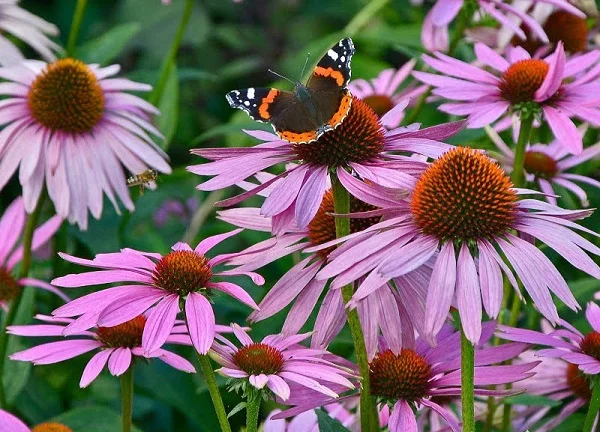10 Tips on How to Keep Tropical Hibiscus Blooming | Hibiscus Blooming Tips
Some links in this post may be affiliate links
Tropical Hibiscus are prolific bloomers and will reward you with a profusion of flowers if you keep them happy by providing the right growing conditions.
Tropical Hibiscus are fast-growing, bushy, woody, evergreen shrubs which bear vibrant, large, funnel shaped flowers with a prominent staminal column and glossy, ovate, pointed, green leaves with serrated margins.
The Tropical Hibiscus are hybrids and cultivars of Hibiscus rosa-sinensis (Chinese Hibiscus or Rose of China) which is native to the warm, tropical regions of Asia and Pacific Islands.
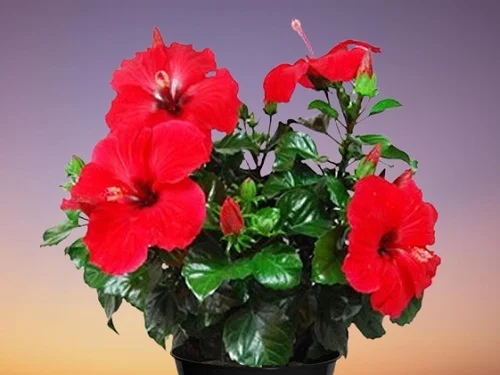
Having their origins in the tropics implies that the Tropical Hibiscus will flourish in tropical and subtropical climates like USDA Zones 10-12 where temperatures do not dip below -10C in winter.
This means that Tropical Hibiscus are not cold-hardy. However, in the colder regions, they can be grown in containers which can be brought indoors before the first frost in fall or can be grown as houseplants.
The flowers in Tropical Hibiscus are about 4-8 inches wide and may be single or doubled petalled. They come in red, white, yellow , pink, orange, purple, peach and appear in early spring to late fall.
Tropical Hibiscus prospers in bright light with 6-8 hours of direct sunshine, average warmth of 16-290C, moderate humidity of 50-55% and consistently moist, fertile, well-drained, slightly acidic, all purpose potting soil coupled with fortnightly feeding during the growing season.
If the right growing conditions are not provided, these tropical plants will not bloom much. Below are some great tips on how to keep Tropical Hibiscus blooming for you.
Tips on how to keep Tropical Hibiscus blooming all season Long
1. Light Requirements
Tropical Hibiscus grow and flower best in full sun with at least 6-8 hours of sunshine per day through out the growing season. They will not bloom if the light is not adequate.
However, where the summers are very harsh, grow Tropical Hibiscus in a shaded spot to protect them from the hot afternoon sun which can cause scorching of the leaves.
Tropical Hibiscus that is grown indoors should be positioned next to a bright window which receives at least 6-8 hours of direct sunlight. You can instal a grow light if the natural lighting is not sufficient. Check out these full spectrum grow lights on Amazon.
The light is needed for making food that is required for growth and flower production. Insufficient light implies that the plant cannot make enough food for growth and flower development. Check out this guide on understanding light for houseplants.
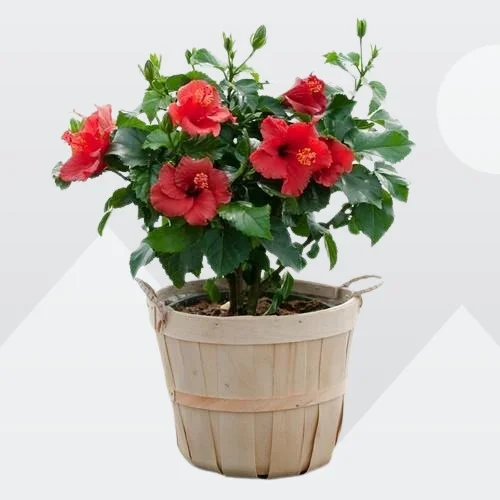
2. Timely Pest Control
Tropical Hibiscus is prone to aphids and spider mites. These pests attack the new growth from where they suck the plant sap. This causes the plant to become dehydrated and results in wilting and dropping leaves which negatively affects blooming.
Regularly inspect the Tropical Hibiscus underneath the leaves and in the growing tips for these pests and take timely control measures.
Treat the plant for the pests with neem oil or insecticidal soap. Make sure to follow the manufacturer's instructions on the label.
3. Watering
To keep your Tropical Hibiscus blooming, water deeply during the growing season and keep the soil consistently moist while allowing the top 1-2 inches of soil to dry out between waterings.
Do not allow the soil to dry completely. If the soil is allowed to dry out for a prolonged period of time, it can cause leaves and flowerbuds drop.
For container-grown plants and houseplants, do not allow the plant to sit in soggy soil. Ensure that the container has adequate drainage holes and that the soil is well-drained.
Discard any excess water from the catch plate to prevent the soil from gettting soggy. Soggy soil can lead to root-rot and death of the plant.
Avoid watering the plant with too cold water as it can lead to shock of this tropical plant which can result in leaf and flowerbud drop.
Cut down on watering during the cold season to keep the soil slightly moist as growth is reduced at this time but do not let the soil dry out completely. Learn more on how to water indoor plants the right way.
4. Temperature
Tropical Hibiscus thrive and bloom best in warm temperatures within the range of 16-290C during the growing season. Position the plants in a shaded spot in hot regions. Keep them cool at about 150C during the dormancy (cold) period.
The container-grown Tropical Hibiscus should be brought indoors when the temperatures dip to 00C as Tropical Hibiscus cannot tolerate frost. They should be positioned in a brightly lit spot where they can receive 6-8 hours of sunlight.
Indoors, Tropical Hibiscus should be provided with adequate humidity if the indoor air is too dry. They should also be kept away from drafts like windy doors and windows, air conditioning units, heat sources among others.
Cold and hot drafts can cause leaf and flowerbud drop in addition to reduced growth which can result in poor blooming. The plants can be taken outdoors in spring when the night temperatures are about 100. Check out this guide on understanding temperature for houseplants.
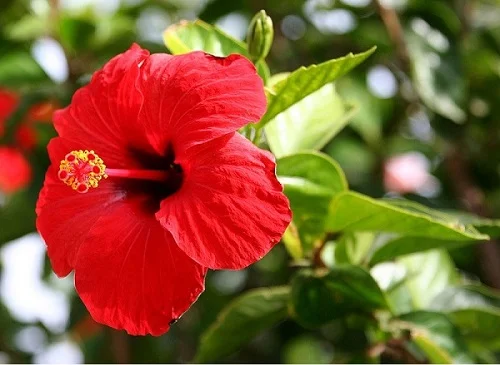
5. Soil Quality
For long blooming, Tropical Hibiscus require soil that is slightly acidic, rich in organic matter and free-draining to prevent it from getting soggy while providing the required nutrients.
Poor quality soil does not drain easily and therefore it easily becomes compacted or soggy which will negatively impact the growth of the plant and by extension flowering.
A soil with the following composition is ideal for Tropical Hibiscus; 30% all purpose potting soil, 30% compost like vermicompost, 30% coco coir and 10% perlite. The coco coir improves drainage, holds moisture and improves soil fertility when it decomposes.
6. Control Soil PH
Tropical Hibiscus thrive and flower more in soil that is slightly acidic at a PH of 6.5-6.8; use a soil PH meter to ascertain it is within this range. If the PH is not within the recommended range, it should be ammended.
To increase PH (if it is too acidic), add lime to the soil. To decrease PH (if it is too alkaline), add soil sulphur. Allow a 2 weeks period for the soil to correct the PH.
7. Feeding (Fertilizer)
Tropical Hibiscus are heavy feeders which require regular feeding to keep them healthy and blooming. Inadequate nutrients in the actively growing parts results in poor growth and flowering.
Fertilize the Tropical Hibiscus with a balanced fertilizer every 2-3 weeks during the growing season or apply a slow-release fertilizer every 8 weeks (early spring & late summer) to promote flowering.
Do not feed the plants during the cold season as growth is minimal at this time, therefore, the plant does not it. Feeding at this time can lead to fertilizer burn and eventual death of the plant. Learn more on how to feed houseplants.
8. Mulching
Tropical Hibiscus require warm soil conditions to bloom all season long. To keep the soil warm in the cold season, apply a 2-3 in. mulch of dry vegetation on the soil surface but take care not to let the mulch come into contact with the stem to prevent rotting.
Apart from keeping the soil warm during winter, the mulch will also help in retaining moisture in the hot months. Once it decays and decomposes, it helps in improving the soil drainage and fertility.
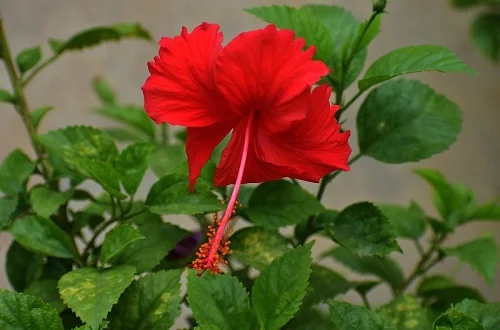
9. Timely Repotting
Tropical Hibiscus needs to be repotted when it becomes rootbound to promote flowering. When you notice any of the following it is time to repot; roots begin to grow through the drainage holes, the soil dry out faster than before, wilting and leaf drop.
Repot Tropical Hibiscus at the beginning of the growing season (early spring) to give it adequate time to recover from the repotting shock.
Select a pot 1 size larger than the current one and one that has a drainage hole to prevent the soil from becoming soggy as it can lead to root-rot.
Use a pot that is wider rather than a deeper one. A deeper pot will cause the plant to direct more energy to root development instead of flower growth.
Place a layer of gravel in the bottom of the pot to enhance drainage and prevent the soil from blocking the drainage holes. Fill the pot a third way with the recommended soil.
Take out the plant from its pot, loosen the soil around the roots and shake off excess soil. Inspect the roots and cut away dead roots. To keep the plant small, cut off a third of the roots.
Position the plant in the center of the pot, spread out the roots and fill the pot with the soil. Lightly firm the soil around the plant.
Water the soil liberally until water comes out through the drainage holes and place the set up in a warm, well-lit place.
10. Proper Pruning and Grooming
Pruning Tropical Hibiscus is a key practice in keeping it blooming as flowers are borne on new growth. Remove dead flowers and leaves to maintain the plant neat and tidy as well as minimize pest and disease infestations.
To encourage branching and the growth of a bushy compact plant, pinch off the growing tips regularly to attain the shape and size you desire.
Remove the dead, diseased, crooked and any branches that growing wayward to maintain the desired shape and also improve air circulation within the Hibiscus bush.
In late winter or early spring, cut back the stems by half to encourage new growth, to keep the Tropical Hibiscus bush compact and control size. Learn more on how to prune houseplants.
You liked it? Share on social media.
Related Content
Amazon Associates Disclosure
Homeplantsguide.com is a participant in the Amazon Services LLC Associates Program, an affiliate advertising program designed to provide a means for sites to earn advertising fees by advertising and linking to amazon.com.




